Fresco Painting™
Fresco painting is a centuries-old artistic technique that transforms plain surfaces into captivating, long-lasting masterpieces. Revered for its durability, rich texture, and deep historical roots, this classical art form blends seamlessly with architecture, turning walls and ceilings into expressions of cultural heritage and refined beauty.
From the grand, soaring ceilings of Renaissance cathedrals to elegant, hand-painted walls in modern luxury homes, fresco painting has always stood as a symbol of sophistication. Today, this art form is being reimagined for contemporary interiors, where it brings a sense of elegance, depth, and timeless storytelling that no modern painting technique can match.
At Artistic Wall & Ceiling Art, we specialize in crafting custom fresco murals that elevate your space with a unique fusion of fine art and architectural design. Whether you're restoring a heritage property, enhancing a boutique space, or adding character to your home, fresco painting delivers unparalleled beauty and lasting value.
If you're searching for a meaningful way to enhance your space with historic charm and artistic craftsmanship, fresco painting is the perfect choice. Let your walls and ceilings become living works of art—designed to inspire for generations.

What is Fresco Painting?
Fresco painting is a classic mural technique that dates back thousands of years and continues to captivate art enthusiasts worldwide. This unique method directly applies natural mineral pigments onto freshly laid wet lime plaster. As the plaster dries and sets, it absorbs the pigments through a chemical process, effectively bonding the color to the wall surface itself. The result is a vibrant, durable artwork that becomes an integral part of the architecture.
Unlike other painting techniques that sit on top of a surface, fresco art becomes one with the wall. This fusion not only enhances its longevity but also contributes to the soft, matte finish and earthy tones that frescoes are known for. Over time, fresco murals develop a graceful patina, giving them a timeless beauty that often improves with age.
The term "fresco" is derived from the Italian word affresco, meaning “fresh.” This is a nod to the technique’s defining characteristic: it must be executed quickly, while the plaster is still moist. Artists must work with precision and speed, as no further corrections can be made once the plaster dries. This urgency demands skill and foresight, making fresco painting as challenging as it is rewarding.
Whether you're studying Renaissance masterpieces or exploring ancient Roman and Greek ruins, you'll find frescoes that have survived for centuries, a testament to the enduring power of this natural, eco-friendly art form.
Different Techniques of Fresco Painting
1. Buon Fresco (True Fresco)
Buon fresco is the most authentic and time-honored method of fresco painting. In this technique, natural mineral pigments are diluted in water and applied directly onto a layer of fresh, wet lime plaster. As the plaster sets, a chemical reaction occurs that binds the pigments to the wall, forming a permanent and incredibly durable image.
Benefits of Buon Fresco:
- Exceptionally long-lasting—many works have survived for centuries
- Produces deep, natural tones that age beautifully
- Ideal for large-scale murals, ceilings, and architectural art
- Environmentally friendly and non-toxic
This is the technique used by Renaissance masters like Michelangelo (Sistine Chapel) and Raphael, whose works continue to inspire awe to this day.
2. Fresco Secco (Dry Fresco)
Fresco secco, or “dry fresco,” involves painting onto dry plaster rather than wet plaster. Artists mix their pigments with a binding agent such as egg yolk, casein, glue, or oil to help the paint adhere to the surface. While less durable than buon fresco, fresco secco allows for greater flexibility and detail.
Benefits of Fresco Secco:
- Easier to correct mistakes and make changes
- Allows for finer details and slower working time
- Ideal for restoration work or adding highlights to existing frescoes
- Versatile and compatible with various surfaces
Because the paint sits on the surface, rather than fusing with it, fresco secco is more vulnerable to peeling or fading over time, but modern conservation techniques can help preserve it.
3. Mezzo Fresco (Half Fresco)
Mezzo fresco is a hybrid technique that falls between buon fresco and fresco secco. Here, pigments are applied to slightly damp plaster, which is not fully set but no longer wet. This method provides a balance between workability and permanence, offering more time for blending and detail while still achieving some pigment absorption.
Benefits of Mezzo Fresco:
- Combines the durability of buon fresco with the control of secco
- Ideal for moderate climates where full wet plaster work is difficult
- Less time pressure than traditional true fresco methods
- Suitable for intricate designs requiring some precision
4. Sgraffito (Scratched Fresco)
Sgraffito is a decorative fresco technique where multiple layers of colored plaster are applied, then selectively scratched or carved to reveal the underlying colors. This creates a bold, textural contrast and often adds a sculptural quality to frescoes.
Benefits of Sgraffito:
- Adds rich texture and visual depth
- Perfect for borders, ornamental panels, and architectural accents
- Offers a unique, handcrafted aesthetic
- Can be used in both traditional and contemporary designs
This technique is especially popular in decorative architecture and can be found on building façades, walls, and even ceramics.
5. Contemporary Fresco Techniques
Modern artists and muralists have adapted the principles of fresco painting using contemporary materials and methods. These techniques often involve using acrylic binders, synthetic plasters, or lime-compatible paints to replicate the look and feel of traditional fresco without the rigid timing constraints.
Benefits of Contemporary Fresco Methods:
Accessible for artists of all skill levels
Compatible with a wide range of wall surfaces, including drywall and concrete
Offers flexibility in color, texture, and finish
Ideal for both indoor and outdoor mural projects
Contemporary fresco techniques bridge the gap between tradition and innovation, keeping this timeless art form alive in the modern era.

Benefits of Choosing Fresco Painting
Fresco painting isn’t just an art technique—it’s a statement of timeless elegance, craftsmanship, and durability. Whether you're designing a luxurious interior, restoring a historical space, or seeking a healthier alternative to modern wall treatments, fresco painting delivers unmatched value.
Here are the top reasons why fresco murals are a smart, stylish, and sustainable choice for both residential and commercial spaces:
1. Long-Lasting Durability That Withstands Time
Unlike traditional paint, which sits on the surface and eventually chips, peels, or fades, fresco pigments are chemically fused into wet lime plaster. This means the artwork becomes part of the wall itself, creating an image that can last for centuries. Even under varying climate conditions, properly executed frescoes maintain their color and clarity for generations.
2. Natural, Non-Toxic, and Eco-Friendly
Fresco painting uses natural mineral pigments and lime-based plaster, making it an ideal choice for those who prioritize sustainable and non-toxic home design. It’s completely free of harmful chemicals and VOCs (volatile organic compounds)—a common pollutant in conventional paints.
3. Elegant, Timeless Aesthetic Appeal
The texture, depth, and earthy tones of fresco art offer a refined and luxurious look that’s hard to replicate with modern paint. Inspired by Mediterranean villas and Renaissance masterpieces, fresco murals introduce an artistic richness that enhances any décor style, from classical to contemporary.
4. Unique, Custom Artistic Expression
Every fresco is a one-of-a-kind, hand-painted masterpiece. Unlike wallpapers or prints, no two frescoes are identical. Whether you envision a calming landscape, religious narrative, or abstract expression, your mural is tailored to your exact style and vision.
5. A Living Link to Art History and Culture
Fresco painting connects your space to the rich traditions of classical art, echoing the beauty of Roman villas, Greek temples, and Renaissance cathedrals. Displaying a fresco mural not only enhances your environment—it infuses it with cultural depth and historical significance.
6. Adds Distinctive Value to Your Property
Custom fresco murals are seen as luxury architectural elements that elevate the perceived value of a property. Homes, hotels, or commercial spaces that feature integrated fine art attract discerning buyers and art collectors looking for something beyond the ordinary.
7. Low Maintenance and High Resilience
Once the fresco is cured and optionally sealed, it becomes remarkably resistant to dust, mold, and everyday wear and tear. Unlike canvas or framed art, fresco murals require minimal maintenance and hold up well in both humid and dry conditions.
8. Versatile for Modern and Classic Spaces Alike
While often associated with historic buildings, fresco art is extremely versatile. It can enhance modern lofts, boutique hotels, wellness spas, upscale restaurants, or even minimalist homes. Frescoes can be applied to walls, ceilings, domes, alcoves, and architectural features to create dramatic and immersive environments
Final Thoughts: Why Fresco Is More Than Just a Mural
Choosing fresco painting means investing in an art form that blends tradition, sustainability, and timeless style. Whether you're restoring a heritage property or designing a cutting-edge interior, fresco murals provide an enduring sense of beauty and meaning that transcends trends.
Ready to transform your space with the elegance of fresco art? 🎨 Let your walls tell a story that will last a lifetime.
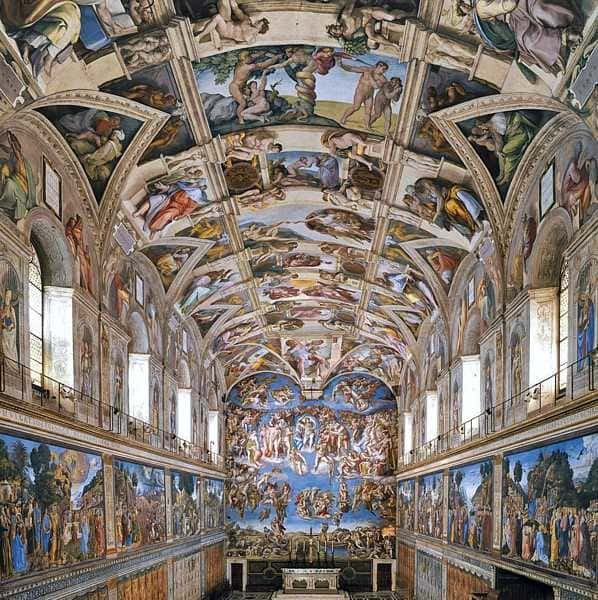
Popular Uses of Fresco Painting
Fresco painting isn’t just a relic of the past—it’s a living, timeless art form that continues to inspire, enhance, and transform a wide range of environments. Known for its durability, elegance, and deep historical roots, fresco painting remains a highly sought-after technique in both classical restoration and contemporary interior design.
Here are the most common and influential uses of fresco painting across both traditional and modern-day settings:
1. Historical Buildings and Heritage Sites
One of the most iconic uses of fresco painting is in the decoration of historical architecture. From ancient Roman villas to Renaissance cathedrals, frescoes have long been used to depict religious, mythological, and political narratives.
Today, fresco murals are often preserved or restored as part of cultural conservation efforts, helping to maintain a nation’s artistic heritage and attract cultural tourism.
2. Museums and Art Galleries
In museums and galleries around the world, fresco painting is showcased both as a historical treasure and a revived contemporary art form. Many modern artists are reinterpreting classical fresco techniques to blend ancient methods with modern aesthetics, creating fresh, immersive experiences.
These curated murals serve as powerful educational tools and aesthetic statements that connect past techniques with present-day expression.
3. Interior Home Décor
Fresco painting in interior design is experiencing a renaissance of its own. Homeowners looking for custom, elegant, and eco-friendly wall art are embracing fresco murals to add depth and sophistication to their living spaces.
Popular placements include:
- Living room feature walls
- Ceiling murals in dining rooms
- Meditation or prayer rooms
- Arched entryways and alcoves
- Decorative domes in foyers or staircases
Each mural is uniquely hand-painted, making frescoes the perfect blend of personal expression and timeless charm.
4. Places of Worship
Fresco painting has a long tradition in spiritual and sacred architecture. Whether in churches, temples, or mosques, frescoes are used to portray religious stories, icons, and spiritual symbolism that inspire reverence and reflection.
Their durability and ability to seamlessly integrate into architectural surfaces make frescoes an ideal medium for spaces meant to last through the ages.
5. Luxury Hotels, Spas, and Resorts
Upscale hotels, spas, and boutique resorts increasingly turn to fresco painting to elevate interior design and enhance guest experiences. Custom murals add artistic value, visual storytelling, and a sense of timeless luxury.
Whether it's a grand entrance ceiling or a peaceful spa mural, frescoes set the tone for sophistication and serenity.
6. Theatrical Sets and Cinematic Spaces
Fresco-style painting recreates the grandeur of historic eras in film production, stage design, and themed environments. These murals add visual authenticity to period settings and enrich storytelling with artistic detail and historical accuracy.
From Roman columns to Renaissance chambers, fresco painting techniques help transport viewers to another time.
7. Architectural Restoration Projects
Preserving the past requires more than technical skill—it demands a return to authentic craftsmanship. In architectural conservation, fresco painting plays a crucial role in restoring historic buildings and artifacts.
Skilled artisans use traditional fresco methods to recreate faded or damaged murals, ensuring the original vision and integrity of the space remain intact.
Final Thoughts: Fresco Painting as a Modern Legacy
Whether in ancient ruins or modern residences, fresco painting continues to enrich spaces with beauty, meaning, and permanence. Its versatility allows it to thrive in a wide range of environments—from sacred halls and luxury homes to contemporary galleries and restoration projects.
As both a timeless decorative art and a symbol of cultural continuity, fresco painting remains as relevant and revered today as it was centuries ago.
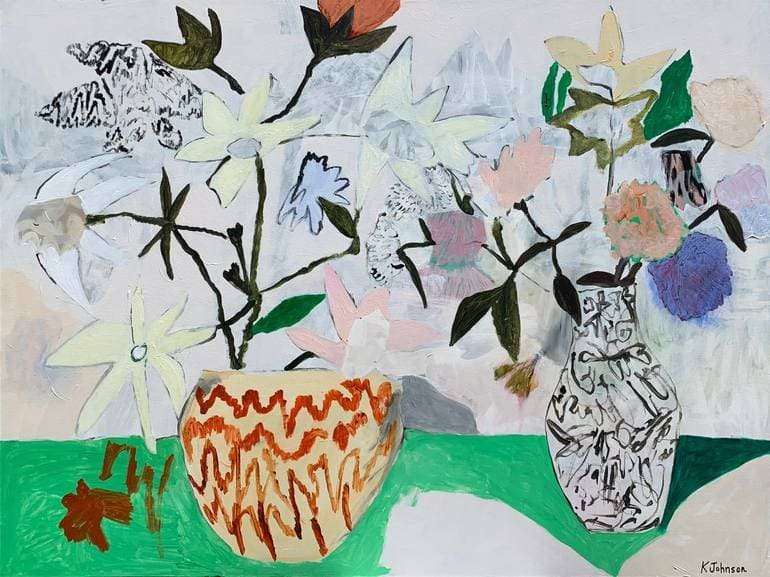

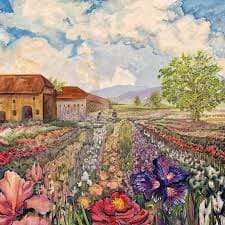
How Fresco Painting is Done
Fresco painting is an ancient yet enduring technique that transforms plain walls and ceilings into vivid, lasting masterpieces. Known for its natural beauty, eco-friendly materials, and unmatched longevity, fresco painting is a true blend of art and architecture.
Whether used in Renaissance chapels or modern interiors, the technique remains rooted in a precise and time-sensitive process. Let’s explore the step-by-step method of fresco painting—from preparing the surface to applying the final strokes.
1. Surface Preparation: Building the Foundation
Every great fresco begins with a carefully prepared surface. The wall or ceiling must be stable, clean, and slightly textured to accept the layers of plaster.
- A rough base coat of lime plaster—called arriccio—is applied.
- This layer provides structure and grip for the topcoat.
- The arriccio must dry thoroughly, often for several days or weeks, before moving to the next stage.
2. Sketching the Design: Transferring the Cartoon
Once the surface is ready, the artist creates a full-scale preliminary drawing, known as a cartoon. This serves as the blueprint for the final mural.
There are two common techniques for transferring the design:
- Pouncing: Tiny holes are made along the lines of the cartoon. The drawing is placed on the wall, and powdered charcoal is dusted through the holes, leaving a dotted outline.
- Tracing with a Stylus: The cartoon is traced over with a pointed tool, leaving faint indentations on the plaster below.
3. Applying the Intonaco: The Wet Canvas
The top layer of fine lime plaster is called intonaco, and it's the key to the buon fresco technique.
- Only as much intonaco as can be painted in one day is applied—this is called a giornata (Italian for "a day’s work").
- The artist must work quickly, as the plaster needs to stay wet for the pigments to bond chemically.
4. Painting on Wet Plaster: The True Fresco Magic
This is where the buon fresco technique truly shines.
- Artists mix natural mineral pigments with water.
- These pigments are painted directly onto the damp intonaco surface.
- As the plaster dries, a chemical reaction known as carbonation occurs, fusing the pigment into the wall itself.
5. Detailing and Touch-ups: Finishing with Fresco Secco
Once the plaster has fully dried, artists may add final touches or correct minor flaws using the fresco secco method.
- Pigments are applied to dry plaster using a binder such as egg yolk, casein, or glue.
- While this allows for finer detail, secco work is less durable than the true fresco.
The Enduring Beauty of Fresco Painting
The process of fresco painting is both a technical feat and a creative journey, requiring mastery of materials, time, and vision. From surface prep to final touches, each step contributes to the durability, vibrancy, and soul of the finished mural.
Whether used in ancient cathedrals or modern homes, fresco painting remains one of the most respected and resilient forms of artistic expression in the world.
Fresco Art for Modern Interiors
Fresco painting, once reserved for ancient temples and Renaissance cathedrals, is now making a stylish and sophisticated comeback in modern interior design. This centuries-old technique is being reimagined for contemporary spaces, blending traditional craftsmanship with minimalist elegance and bold, creative expression. Whether you're aiming for subtle serenity or an eye-catching statement, fresco painting adds depth, texture, and a story to every wall it touches.
Timeless Elegance with a Modern Twist
Modern designers are increasingly embracing fresco painting for its natural beauty and artisanal quality. Unlike mass-produced wallpaper or flat wall paint, frescoes are hand-applied using natural pigments and wet lime plaster, creating a matte, organic finish that pairs perfectly with today’s earthy tones and raw materials like wood, stone, and linen.
From subtle textures to full-scale murals, fresco painting brings a one-of-a-kind visual richness that enhances both residential and commercial interiors. It’s an art form that doesn’t just decorate a space—it defines it.
Custom Art for Unique, Personalized Spaces
One of the most compelling aspects of modern fresco painting is its customizability. Each piece is hand-designed and tailored to suit the mood, purpose, and architecture of the space.
Whether you're envisioning:
- A dreamy abstract fresco for a bedroom retreat
- A calming landscape in a wellness spa
- A dramatic, brand-inspired mural in a boutique hotel or café
Fresco painting allows you to translate your vision into timeless art, directly on the walls.
Perfect for Statement Walls and Focal Points
In today’s design landscape, feature walls are more than just accents—they’re focal points. Fresco painting is becoming a top choice for those seeking something more refined and enduring than standard finishes.
Ideal for:
- Living room or dining room feature walls
- Entryways and stairwells
- Powder rooms and bathrooms
- Home offices or creative studios
Fresco murals add artistic identity and architectural sophistication, elevating your space from ordinary to iconic.
Eco-Friendly and Enduring Beauty
Beyond its visual appeal, fresco painting is a sustainable and long-lasting option. Using natural materials like lime plaster and mineral-based pigments, it’s completely free of VOCs and harmful chemicals. That makes it an excellent choice for eco-conscious homeowners, wellness centers, and green-certified buildings.
Properly maintained, a fresco can retain its color and beauty for generations, maturing gracefully with time, just like the centuries-old masterpieces that inspired it.
Bringing Fresco Painting Into the 21st Century
Whether you’re renovating a historic property or designing a modern sanctuary, incorporating fresco painting brings a layer of meaning and craftsmanship that few other media can match. It connects the past with the present, creating living spaces that are both grounded in history and full of contemporary flair.
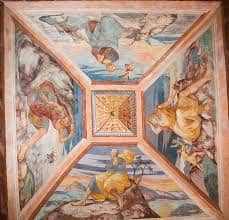

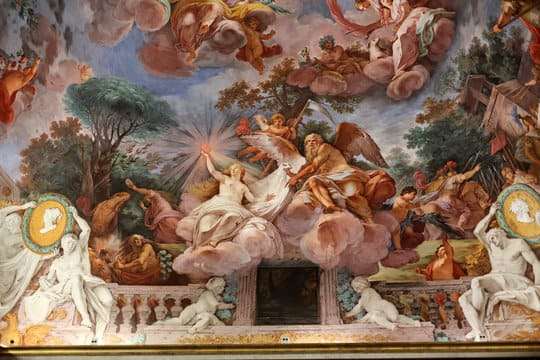
Conclusion: The Lasting Power and Beauty of Fresco Painting
Fresco painting is not just an ancient technique preserved in historic landmarks—it's a living art form that continues to inspire and elevate modern interiors. Rooted in tradition yet incredibly relevant today, fresco painting represents a rare fusion of craftsmanship, natural beauty, and timeless style.
In an age where mass production and disposable décor are the norm, fresco art stands apart as a symbol of authenticity. Each fresco is handcrafted with care, using earth-derived pigments and breathable lime plaster to create imagery that becomes one with the architecture. Unlike conventional paint or wallpaper, fresco painting bonds directly with your walls, creating a permanent and organic expression that matures gracefully over time.
A True Statement of Style and Substance
Whether you're a homeowner, designer, architect, or art lover, incorporating fresco painting into your space is a powerful way to tell a story—your story. From soft, textured backgrounds to vivid, detailed murals, frescoes offer infinite creative possibilities. They don’t just enhance your walls—they define them.
- Want to create a relaxing retreat? A nature-inspired fresco in muted tones can soothe the senses.
- Designing a boutique hotel or luxury spa? Custom murals add a refined, immersive atmosphere that guests won’t forget.
-
Looking to personalize a feature wall in your home? A one-of-a-kind fresco adds charm and emotional value that mass-produced art can’t replicate.
Eco-Conscious, Artisanal, and Built to Last
In addition to its artistic appeal, fresco painting is a responsible design choice. It uses non-toxic, eco-friendly materials that support better indoor air quality—ideal for modern homes, wellness spaces, and green-certified buildings. Its exceptional durability means it resists peeling, cracking, and fading, making it a low-maintenance yet high-impact investment.
This centuries-old technique continues to prove its worth, not only in the grand halls of history but in the personal, meaningful spaces we inhabit today.
Bring Timeless Art Into Your Everyday Life
If you’re ready to go beyond the ordinary and make your interior design truly unforgettable, fresco painting is your gateway to artistic transformation. With its unmatched texture, visual depth, and historical soul, a fresco mural can turn any blank wall into a masterpiece that tells your story—and stands the test of time.
Discover the beauty. Embrace the tradition. Make your walls come alive with fresco painting.